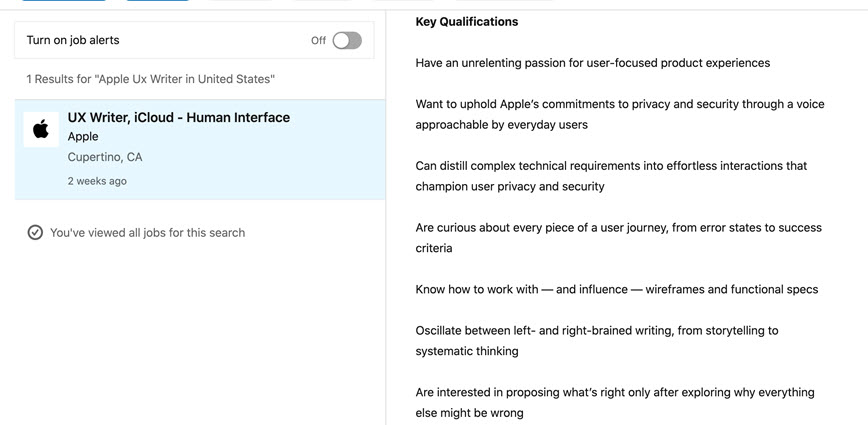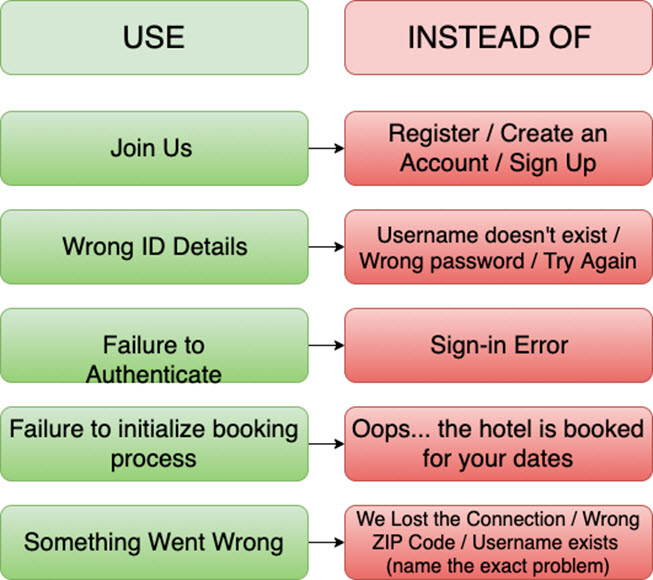In the simplest explanation of the term, a UX writer is an author who writes for user experience. When using a digital product, you follow text in order to obtain the user experience you’re after. This text should be precise, brief, and straight to the point. The writer’s goal is to guide the user through the different stages of product use.
The term gets mixed up with technical writing and copywriting. The difference is that UX writing is much more concise. An effective copy results from the collaboration between the writer and the entire design team.
Let’s start with the specifics: how can you improve your UX writing skills and contribute towards an improved final product?
Here are 10 Tips on How to Boost Your UX Writing Technique!
1. Clarify the Skills that You Need to Obtain
Obviously, you need writing skills to become a better UX writer. But we’re not talking about essay writing or blogging. The only similarity is that you’re working with words. UX writing sees words as a part of the design. You need to use as few of them as possible, while delivering a clear message to the user.
You’re not a copywriter! There’s a big difference.

2. Use the Brand’s Voice
UX writers make a common mistake: their text is cold and soulless. That’s why many digital products have similar instructions. They are boring, and often confusing.
Yes; you’re guiding people’s behavior through the content. But that doesn’t mean you should give them commands. UX writing expresses the brand’s behavior towards its users. Be humble, positive, direct, and funny when appropriate.
3. Learn from Successful Brands
Have you seen Amazon’s error pages? They are part of the company’s UX design. It’s a brilliant example of proper UX writing: brief, on-point, and with a tad of humor in the mix.

Take your time to study how Apple and Amazon approach UX writing. They stick to the main principles of clarity and brevity. Still, the writers add a unique touch that’s recognizable for that particular brand.
You can study their job ads, so you can see what those brands want in a UX designer. Here’s what Apple wants from a candidate for such a position:

4. Make the Text Easy to Translate
Don’t use idioms, which would be impossible to translate in several languages. You have a goal: write text that doesn’t lose any of its sense when being translated.
Always consider Spanish, German, French, Chinese, and other languages that are often included in product descriptions and website translations.
5. You Need a Precise Content Strategy
As a UX designer, you complete mini-goals that fit into the big picture.
Make sure to follow the company’s branding. If you get a style guide, follow it religiously. You can still rely on your own voice, but you need to fit it into the project’s needs. That’s another difference between UX writing and copywriting. It’s not about the writer’s point of view. It’s about meeting the project’s goals. The users won’t even know who the writer is.
6. Understand the Users
Before you start working on a UX writing projects, answer these questions:
- Who will use this digital product?
- What do the users know about it?
- What goals do they want to achieve?
You should also know their pain points. This is something you’ll discuss with the product's team. They offer solutions based on these pain points. Your writing should be in-line with the final goals.
This is the main question to answer:
- What do you want the user’s next step to be?
As a UX writer, your goal is to guide them towards action.
7. Stick to Simplicity
Complex language will lead the users to mistakes. Stick to simple words that express the actions you want the users to take.

You should use words that everyone understands. They must convey the message your team wants to deliver, with no room for misunderstandings.
8. Keep the Terminology Consistent
Copywriting is all about non-repetitiveness. Even when the writers repeat information to make it stick, they use different terms, so their text wouldn’t get boring.
In UX writing, you shouldn’t stick to the non-repetitiveness rule. Keep the words and phrases consistent throughout the text. You don’t need to hit the thesaurus or pay for essays online just to get a more versatile choice of words throughout the text.
9. Talk to the User
When writing UX content, use a conversational instead of an instructional tone. The guidelines should be useful and helpful, but friendly at the same time.
You’re writing a copy that enables the users to interact with the product. It shouldn’t be intimidating.
Here’s an example:
5. Screenshot
‘Email’ must not be empty is NOT a good example of UX writing. Must not is a harsh word, so you assume the brand doesn’t have a friendly approach towards its users. There are better ways to do this:
- Please provide your email
- We’ll need your email address to continue
- Can you give us your email?
The tone can be serious, depending on the situation. But you shouldn’t sound like you’re giving orders.
10. Don’t Use Jargon
If you’re working on advanced products that only experts will use, jargon is okay. They understand it. But it’s safer to stick with concise and clear writing that everyone understands.
Most people know that IP stands for Internet Protocol, but it’s a good idea to include a brief explanation for those who don’t.
It’s All about Clarity!
UX writing is the bridge between the brand and the product’s user. You need to understand the team’s goals and translate them into text that leads the users towards the right actions.
We gave you many tips to follow, but all of them are simple. Start practicing today!
Author, Vendy Adams, Technical Writer
Vendy Adams is a tech writer, dog lover, and avid reader. Did you know that you can pay EduBirdie for your essay? Vendy teaches students and website owners how to write content that readers enjoy.